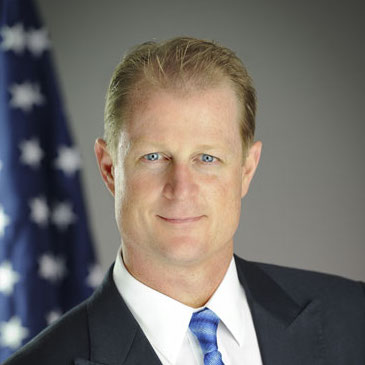
Following certain procedural steps will strengthen independent agencies’ rulemaking processes.
As a Commissioner of the U.S. Consumer Product Safety Commission (CPSC), I have found that we could greatly improve the Agency’s functioning by adopting several rulemaking procedures. Some of these procedures, like the publication of a regulatory agenda, are time-honored principles espoused by a long line of executive orders, while others, such as pay-go requirements that force agencies to consider the collective economic costs of their rules, are emerging practices used in other countries. Four key procedural steps could greatly improve rulemaking at CPSC and other independent agencies.
First, independent agencies like CPSC should be expected to improve the accuracy and timeliness of their regulatory agendas. The regulatory agenda concept began with Executive Order 12,044, issued by President Jimmy Carter in 1978. Its plainly stated purpose was “to give the public adequate notice” of how agencies would be spending their time in the near term, which would allow for and encourage meaningful public participation in the regulatory process. The Regulatory Flexibility Act (RFA) extended the regulatory agenda requirement to all agencies, including independent agencies.
President Ronald Reagan’s Executive Order 12,291 retained the agenda requirement and broadened it from significant rules to all rules. President Bill Clinton’s Executive Order 12,866 added a requirement for the issuance of a regulatory plan, which would highlight “the most important significant regulatory actions that the agency reasonably expects to issue in proposed or final form in that fiscal year.” Most recently, President Barack Obama’s Executive Order 13,563 expressly reaffirmed the principles and requirements of Executive Order 12866.
Despite a 40-year history of presidents and Congress uniformly endorsing the principle behind regulatory agendas so interested parties can plan their participation in the regulatory process, CPSC appears not to have endorsed that principle. CPSC’s regulatory agenda contains regulatory projects that have been entirely stagnant for years—some that have been around for decades. It also includes proposals that have been described as not being among the Agency’s priorities, yet our attempts to align the agenda with the Agency’s actual work have too often been summarily rebuffed. As a result, stakeholders must piece together disparate, and sometimes conflicting, statements from a variety of sources, rather than simply relying on the Agency’s regulatory agenda to identify the Agency’s priorities. The Agency’s outdated agendas run the risk of not only under-informing the public, but also actively misleading them as to what projects the Agency will spend its time on in the coming year.
Second, in addition to issuing more accurate regulatory agendas, independent agencies’ proposed rules should be subjected to external review. Executive orders have established that the White House Office of Information and Regulatory Affairs (OIRA) must review all of executive branch agencies’ significant regulatory proposals—which are generally those that have an annual economic impact of $100 million or more. This external review requirement currently does not extend to independent agencies. However, some legislative proposals would provide for independent agencies to submit some or all of their proposed rules to OIRA for review.
Such legislation is needed because the principles that support external review of executive agencies’ proposed rules also apply to independent agencies. For example, CPSC’s proposed revisions to its Certificates of Compliance rule have been the target of substantial criticism in part because of assumptions surrounding the rule’s regulatory burden. If OIRA or another external reviewer had vetted the proposal, that reviewer might have identified problems with those assumptions and allowed us to present a sounder proposal.
This is not to suggest that CPSC or any other agency is sloppy in its work. To the contrary, talented, dedicated public servants draft CPSC’s rules that staff believe are in citizens’ best interests. However, even experts with the best intentions can make mistakes. CPSC does not have a monopoly on good ideas, and we should seek wisdom wherever we can find it.
Moreover, on occasion I have seen staff’s analysis function less as the objective opinion of experts and more as a post hoc justification of a decision that had already been made based on political considerations. Independent review will help ensure that CPSC’s decisions are based on career technical staff’s expertise, not on politics.
Review by an outside entity can also provide a more holistic view of the regulatory landscape by incorporating views of other parts of government. As former OIRA Administrator Cass Sunstein has written, OIRA serves as “an information aggregator.” Particularly in an area like product importation—where CPSC shares the regulatory space with dozens of partner agencies that are led by U.S. Customs and Border Protection—OIRA’s administrative omniscience can ensure we neither duplicate nor contradict the messages stakeholders receive from other agencies.
Third, CPSC and other independent agencies should do a better job implementing best practices for public participation in the rulemaking process. Too often, CPSC has failed to go beyond the minimum requirement for public participation established under the notice-and-comment structure in the Administrative Procedure Act (APA). As a result, CPSC has forsaken opportunities to obtain critical public input that could have greatly enhanced regulatory decision-making.
For example, the advisory panel report underlying CPSC’s proposed rule on phthalates in some children’s products only underwent a closed, invitation-only peer review, rather than public peer review of the kind that for some instances is expressly recommended in the Office of Management and Budget’s (OMB) Final Information Quality Bulletin for Peer Review. OMB’s recommendations, of course, do not apply to independent agencies like CPSC, but their lack of legal or administrative force does not diminish their wisdom.
In the phthalates rulemaking, the result was that the advisory panel’s failure to consider vital data was repeated in the Agency’s notice of proposed rulemaking, forcing the Chairman to direct staff to fill in that data gap and re-open the comment period. Thanks to the Chairman’s intervention, we were able to develop the record with public comment on all the data. However, earlier public participation—such as the kind of public peer review recommended by OMB—could have spared the Agency embarrassment and improved the quality of our work.
Finally, in addition to deploying best practices for regulatory agendas, external review, and public participation, both executive and independent agencies should consider the use of an emerging regulatory practice known as “pay as you go.” Colloquially shortened to “pay-go,” this requirement would force agencies to view regulation-imposed economic costs as a finite resource and thoughtfully consider how they use that resource. A pay-go requirement would demand that agencies remove commensurate cost burdens from their books for each additional cost burden they create through a new rule. A related concept of a “regulatory budget” would set a maximum amount of economic costs that could be imposed through regulation.
Pay-go and regulatory budgets could be applied either at an agency or government-wide level. For example, in an agency-level pay-go model, before promulgating a new rule, CPSC would have to repeal a current rule or rules that impose a comparable economic burden. A government-wide model would allow the repeal of a rule promulgated by another agency to offset the costs of a new CPSC mandate. Under either model, agencies—either individually or collectively—would have to prioritize their activities and decide where they want to allocate their finite burden resources.
The pay-go model has been resoundingly successful in the United Kingdom. What began as a “One-in, One-out” program evolved to “One-in, Two-out,” which “meant that for every pound of cost that new domestic regulation imposed on business, two pounds of cost had to be removed through deregulation.” As a result of this program, “the Government has reduced the annual cost to business of domestic regulation by almost £2.2 billion.” Moreover, the reforms have improved not just the economic climate but the economic mood as well, as the percentage of businesses that find government regulation “fair and proportionate” has risen from under 40 to over 60 percent over the course of seven years. In fact, this program has been so successful, that the UK has now moved to “One-in, Three-out.”
It remains to be seen whether the precise structure of “One-in, Two-out”—or any pay-go model—is appropriate for the American regulatory state. However, the United Kingdom’s experience demonstrates that when agencies face the same kinds of constraints their constituents face, they will do what their constituents must do: adapt and survive.
Codifying the four reforms proposed here would go a long way toward improving the rulemaking process at independent agencies and helping ensure that the public can be better protected and the economy less burdened. However, as CPSC’s failure to use its Regulatory Agenda for its intended purpose underscores, the codification of new procedures will not be enough. The RFA already imposes a statutory obligation for CPSC to issue regulatory agendas, but this has not been enough to compel CPSC’s full obedience with the spirit of that requirement. Even if every reform I have described in this essay is enacted, they will remain paper reforms unless supported by the continued attention of a watchful Congress.
This essay is part of a five-part series, entitled Two CPSC Commissioners Debate Regulatory Reform.
This is the first essay in a two-part feature, published by CPSC Commissioner Mohorovic, addressing various regulatory reform proposals for independent agencies. Part II of this feature, appearing on Tuesday, January 10, will focus on Commissioner Mohorovic’s recommendations for improving regulatory analysis at independent agencies.




